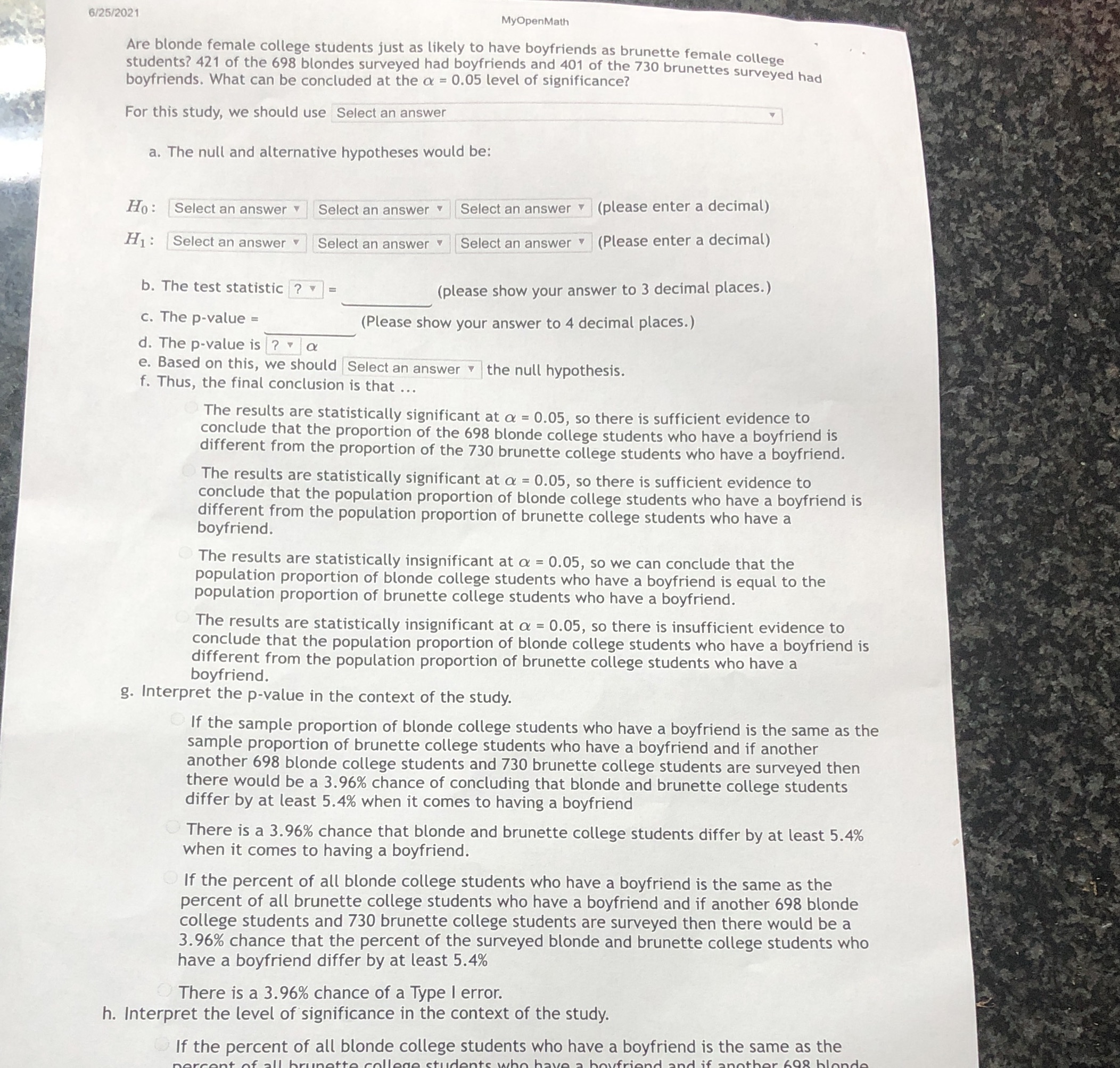Hypothesis test for a difference between two population proportions.
6/25/2021 MyOpenMath Are blonde female college students just as likely to have boyfriends as brunette female college students? 421 of the 698 blondes surveyed had boyfriends and 401 of the 730 brunettes surveyed had boyfriends. What can be concluded at the a = 0.05 level of significance? For this study, we should use Select an answer a. The null and alternative hypotheses would be: Ho : Select an answer Select an answer Select an answer " (please enter a decimal) H1 : Select an answer . Select an answer Select an answer " (Please enter a decimal) b. The test statistic ? = (please show your answer to 3 decimal places.) c. The p-value = (Please show your answer to 4 decimal places.) d. The p-value is ? a e. Based on this, we should Select an answer |the null hypothesis. f. Thus, the final conclusion is that ... The results are statistically significant at a = 0.05, so there is sufficient evidence to conclude that the proportion of the 698 blonde college students who have a boyfriend is different from the proportion of the 730 brunette college students who have a boyfriend. The results are statistically significant at a = 0.05, so there is sufficient evidence to conclude that the population proportion of blonde college students who have a boyfriend is different from the population proportion of brunette college students who have a boyfriend. The results are statistically insignificant at a = 0.05, so we can conclude that the population proportion of blonde college students who have a boyfriend is equal to the population proportion of brunette college students who have a boyfriend. The results are statistically insignificant at a = 0.05, so there is insufficient evidence to conclude that the population proportion of blonde college students who have a boyfriend is different from the population proportion of brunette college students who have a boyfriend. g. Interpret the p-value in the context of the study. If the sample proportion of blonde college students who have a boyfriend is the same as the sample proportion of brunette college students who have a boyfriend and if another another 698 blonde college students and 730 brunette college students are surveyed then there would be a 3.96% chance of concluding that blonde and brunette college students differ by at least 5.4% when it comes to having a boyfriend There is a 3.96%% chance that blonde and brunette college students differ by at least 5.4% when it comes to having a boyfriend. If the percent of all blonde college students who have a boyfriend is the same as the percent of all brunette college students who have a boyfriend and if another 698 blonde college students and 730 brunette college students are surveyed then there would be a 3.96% chance that the percent of the surveyed blonde and brunette college students who have a boyfriend differ by at least 5.4% There is a 3.96% chance of a Type | error. h. Interpret the level of significance in the context of the study. If the percent of all blonde college students who have a boyfriend is the same as the







